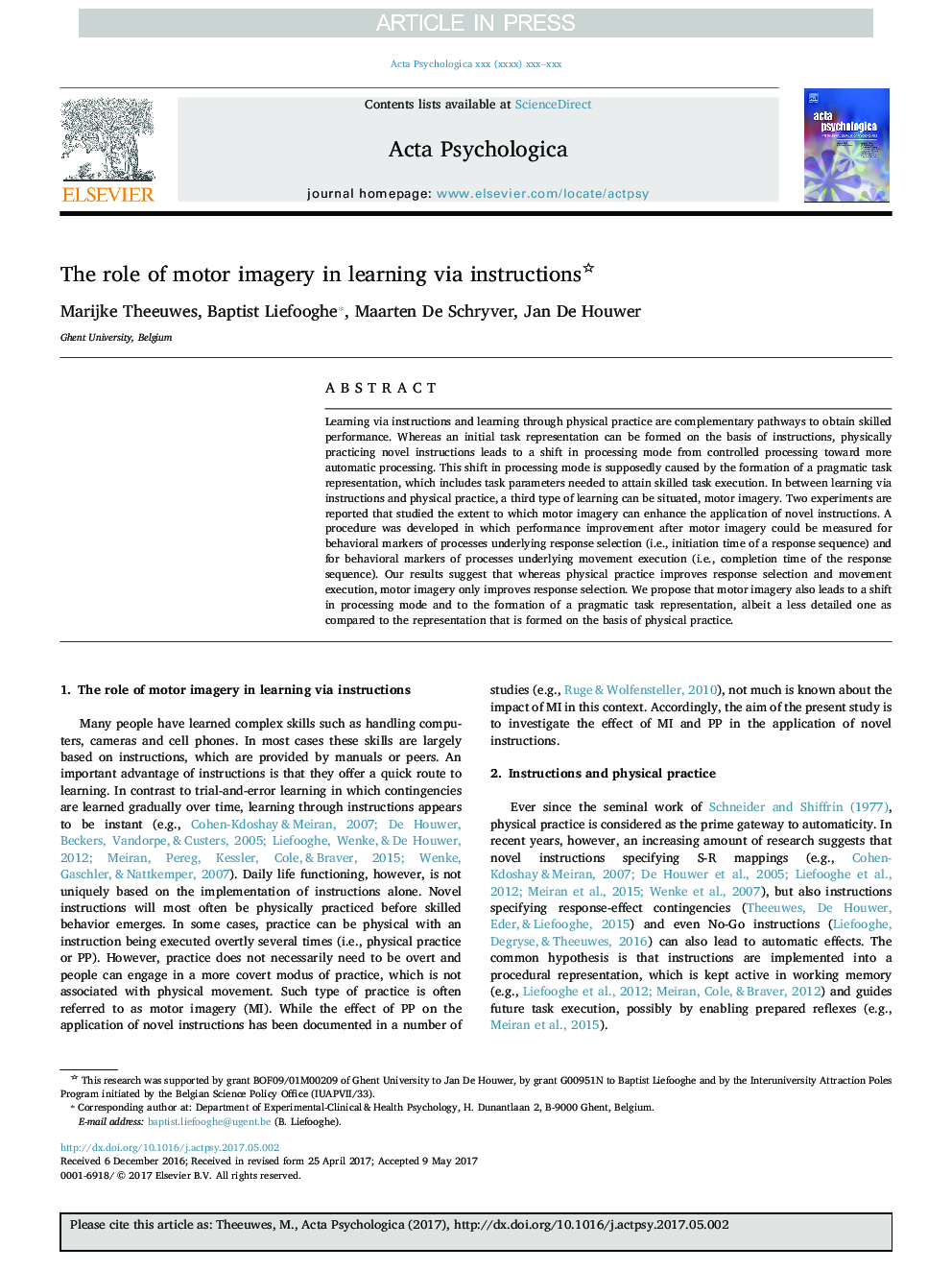| Article ID | Journal | Published Year | Pages | File Type |
|---|---|---|---|---|
| 7276812 | Acta Psychologica | 2018 | 14 Pages |
Abstract
Learning via instructions and learning through physical practice are complementary pathways to obtain skilled performance. Whereas an initial task representation can be formed on the basis of instructions, physically practicing novel instructions leads to a shift in processing mode from controlled processing toward more automatic processing. This shift in processing mode is supposedly caused by the formation of a pragmatic task representation, which includes task parameters needed to attain skilled task execution. In between learning via instructions and physical practice, a third type of learning can be situated, motor imagery. Two experiments are reported that studied the extent to which motor imagery can enhance the application of novel instructions. A procedure was developed in which performance improvement after motor imagery could be measured for behavioral markers of processes underlying response selection (i.e., initiation time of a response sequence) and for behavioral markers of processes underlying movement execution (i.e., completion time of the response sequence). Our results suggest that whereas physical practice improves response selection and movement execution, motor imagery only improves response selection. We propose that motor imagery also leads to a shift in processing mode and to the formation of a pragmatic task representation, albeit a less detailed one as compared to the representation that is formed on the basis of physical practice.
Related Topics
Life Sciences
Neuroscience
Cognitive Neuroscience
Authors
Marijke Theeuwes, Baptist Liefooghe, Maarten De Schryver, Jan De Houwer,
